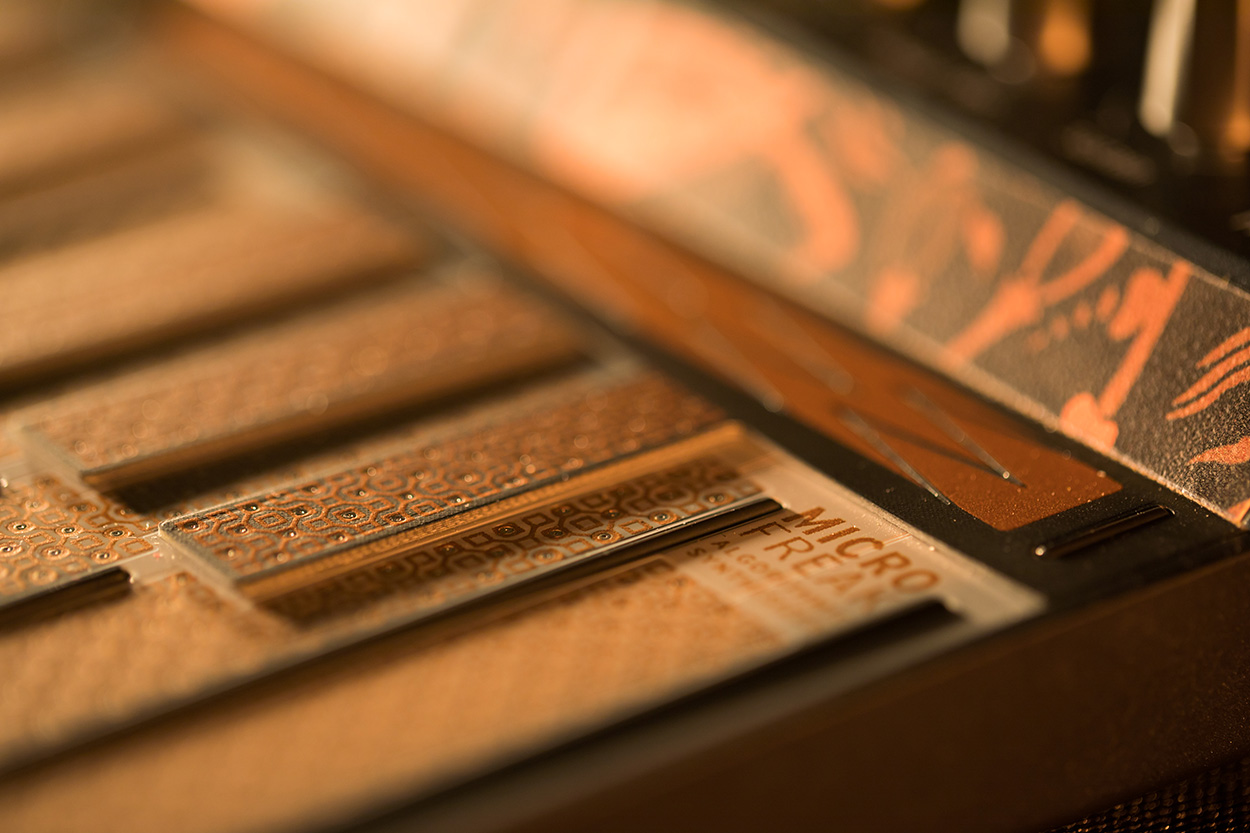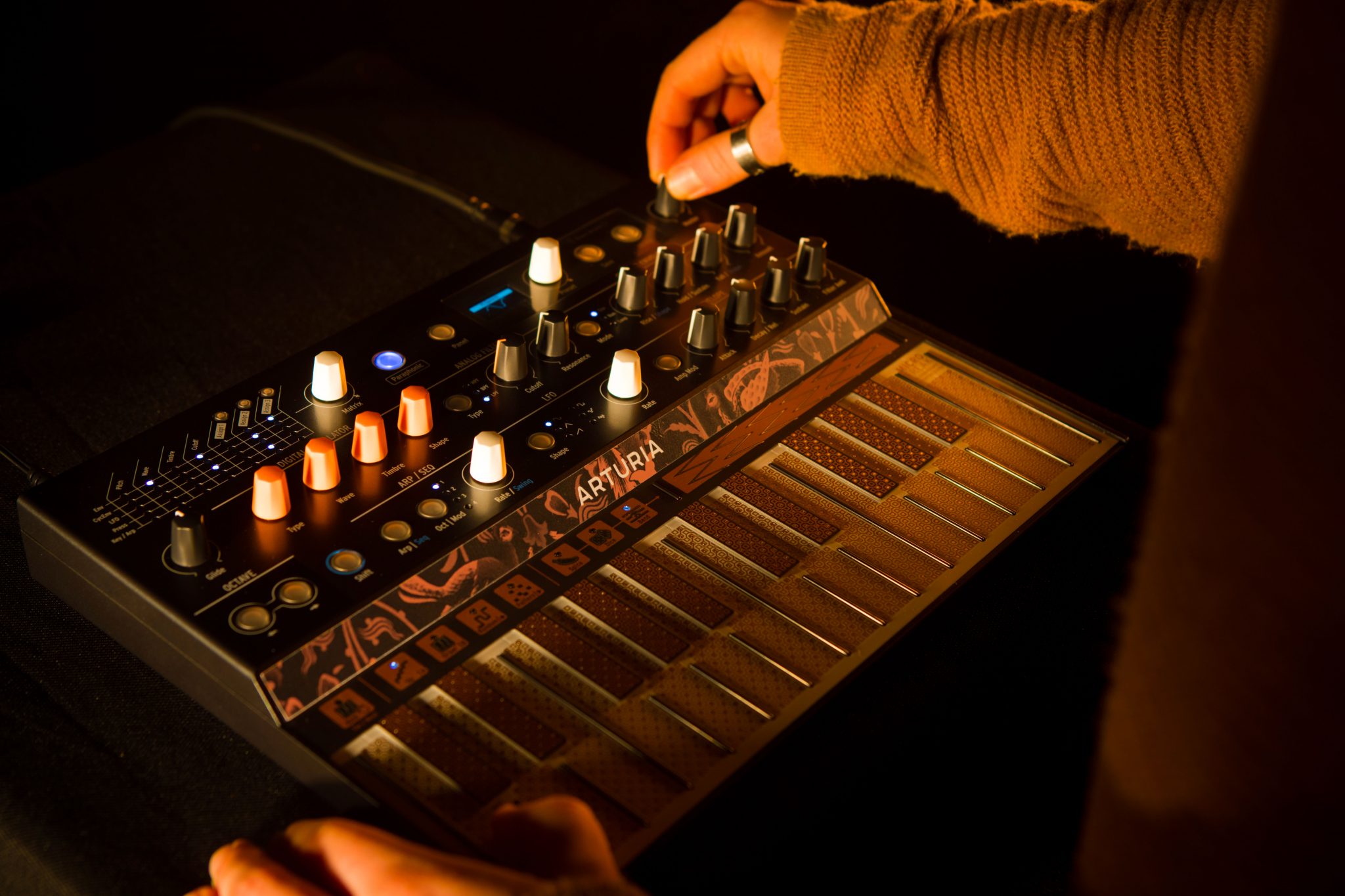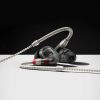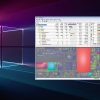
Review: Arturia Microfreak
Best known for their analogue synths, Arturia’s MicroFreak breaks from tradition with a hybrid design that combines digital oscillators with an analogue filter and a whole range of modulation options.
NEED TO KNOW
In recent years, Arturia has enjoyed much success with their range of analogue synths. Starting with the MiniBrute in 2012, they’ve rapidly ascended to near-ubiquitous popularity appealing equally to both the cult of Eurorack users and the DAW-faithful. The MicroFreak is a curious deviation from these pure-analogue products, being their first hybrid design offering digital oscillators with an analogue filter.
The MicroFreak is light-weight (1.02kg), compact and robustly built. It can be bus-powered via USB (even from a mobile phone charge bank or adapter) or from the included DC adapter, but for best pressure response from the keyboard it is recommended to use the DC adapter – as discussed below. A miniature OLED display provides access to the menu system (via the Utility button), along with a detailed display of parameter values/statuses, and the means to navigate its 256 patch memories. The panel is graced by a strip of fruity looking artwork that, you’ll discover once you dig in, hints at the sonic safari within.
Instead of a regular mechanical keyboard, the MicroFreak has a two-octave capacitive-touch keyboard. Essentially, with a firmer touch from your fingers, more skin makes contact with the circuit and provides polyphonic pressure response. Since you can’t rest your fingers on the keys without triggering notes, traditional players may take time to adjust. I found its response to be lightning-fast and expressive, making it ideal for monophonic leads and rapid-fire percussive playing. Immediately above the keyboard you’ll find a horizontal touch-strip providing pitch-bend, which is also multi-purposed for use with the Spice and Dice functions (covered later).
Connectivity on the rear panel caters equally for DAW-centric setups, DAW-less setups and modular hardware setups. MIDI connectivity is provided on both USB and 1/8-inch TRS connectors, with a pair of female DIN tails included in the package. Analogue CV and Pressure outputs are provided on 1/8-inch sockets allowing the MicroFreak to serve as a keyboard controller for analogue modular setups. Analogue Clock In/Out on 1/8-inch TRS sockets provide not only clock data but also start/stop signals (via TRS cables). The Utility menu provides a wide range of configuration options for the analogue CV outputs, allowing adaptation to most common formats. Audio output is provided on a single mono TS 1/4-inch socket connector.
Arturia’s MIDI Control Centre app (for MacOS and Windows) has been updated to support the MicroFreak, providing a patch librarian, a global device settings page, and the means to upload firmware updates to the unit.
DIGITAL OSCILLATOR SECTION
Since the MicroFreak is equipped with a digital oscillator, much flexibility is on offer and, indeed, it delivers. No less than 12 oscillator engine types are on tap, generally unheard of for a synth of this price, each capable of substantial harmonic complexity. Four easily-identified orange encoders control the oscillator section, with Type selecting the engine and three additional parameters to tweak: Wave, Shape and Timbre. All parameters are available as modulation destinations including the type itself (an aspect that adventurous sound designers will no doubt exploit).
The initial patch is monophonic by default, however paraphonic mode is easily engaged; whereby you have four voices to play shared by a single filter. Unlike a majority of paraphonic synths, there are independent envelopes per voice and polyphonic-pressure modulation is available for each note, giving an experience closer to that of a proper polyphonic synth.
The first five engines cover emulation of traditional analogue waves, a harmonic oscillator, a wavetable oscillator and a physical modelling oscillator. The remaining seven oscillator engines are sourced from Mutable Instruments’ popular Plaits Eurorack module, based on open-source DSP code. Refer to the box item for a full run-down of types available.
ANALOGUE FILTER SECTION
The MicroFreak features a 12dB/octave (two-pole) multi-mode analogue SEM filter providing Low Pass, Band Pass and High Pass circuits. I found it to have a gentler response when compared with the Steiner-Parker filter found in Arturia’s Brute series. However, it has a great tone with bags of nonlinear harmonics, and is capable of creating thick creamy sounds at low resonance settings through to piercing chirps at extreme settings. Since the oscillators are capable of generating such rich content, there’s plenty of sonic fodder to carve out with the filter. Also, because so much tonal shaping can be achieved within the oscillators alone, I found myself often using the filter just to tame the edgier digital artefacts of the oscillator section.

MODULATION SOURCES
The LFO is equipped with six waveshapes. The Rate encoder adjusts the speed from 0.06Hz through to 100Hz, thus reaching into audio rate territory. By pressing the Rate encoder, the LFO is synced to various clock divisions of the tempo of the Arpeggiator/Sequencer Clock (which may be synced to MIDI or incoming analogue pulses).
The main Envelope is a traditional ADSR that is hardwired to the amplifier and the filter. The AmpMod button allows it to be removed from the amplifier, and the amount applied to the filter is controlled by the nearby Filter Amt knob. Unusually, control of the Decay and Release times is ganged on a single Decay/Release control which purists may criticise, however it doesn’t cause much concern in practise. An additional envelope, called the Cycling Envelope, provides either a secondary envelope or a secondary LFO via two looping modes (either free running or key-synced). Unlike the main envelope, the slopes of the Rise and Fall stages of the Cycling Envelope can be adjusted to taste in a continuous fashion from a logarithmic to an exponential shape via the Shift modifier button. When the Cycling Envelope is looped and set up with very short Rise and Fall times, the resulting LFO can reach substantially into audio rate territory.
MODULATION MATRIX
In a masterstroke of great design, the MicroFreak has a digital modulation matrix that is entirely accessible on the front panel without menu diving. It provides five sources and seven destinations; the first four destinations are fixed, the remaining three are user assignable. Establishing routings is a slick and intuitive process – using the Matrix push encoder, spin through the LED array to select a source/destination point, press the encoder to select it, and use the encoder again to specify the amount of modulation (reflected on the display). The three user-assignable destinations are defined simply by holding down the associated button and tweaking the parameter you wish to assign. Furthermore, modulation points can themselves be defined as assignable destinations, allowing you to scale modulation points by each other.
Since the oscillators are capable of generating such rich content, there’s plenty of sonic fodder to carve out with the filter.


ARPEGGIATOR/SEQUENCER SECTION
Further inspiration can be found in the Arpeggiator/Sequencer section. The Arpeggiator and Sequencer are controlled using a row of unique capacitive touch-pad icons just above the keyboard. The Arpeggiator has four modes: Up, (note) Order, Random and Pattern. While the first three modes are self-explanatory, Pattern mode is most noteworthy since it is the gateway to achieving controlled randomness. Press a chord shape down and it will play the notes in a random pattern, press another chord shape and the note sequence will change again and so on. The lowest note you play is treated as the fundamental of the chord and is played twice as often as successive notes, usefully emphasising the root note of the chord.
Sequences can be created via step recording or real-time recording and two sequences (either A or B) can be stored independently for each Preset, with each being up to 64 steps in length. A third method is available for creating Sequences: if you come up with a pattern of interest while using the Arpeggiator in Pattern mode (mentioned above), you can instantly copy the results into Sequencer slot A or B. If your patch is in Paraphonic mode you can sequence chords and even play solos over the top of sequences while they are held. Just like some classic mono-synths, Sequences can be transposed in real time simply by playing notes on the keyboard.
The intriguing Spice and Dice functions found on the icon pads, in tandem with the horizontal touch-strip, provide the means to tweak sequence content in real-time. Spice affects note triggering while Dice shuffles the order of the notes already in a sequence. With either Spice or Dice engaged, touching the areas further to the right on the touch strip results in Spice or Dice having a more pronounced effect with Spice more aggressively removing notes/reducing gate times and Dice more aggressively rearranging notes.
If that wasn’t enough fun, Sequences are capable of Motion sequencing up to four parameters and may even be step-edited for radical timbral shifts on each step. Within the Preset area of the Utility menu, each Motion sequence lane can be smoothed to even out rapid transitions. It’s also possible to have Motion sequences built into your patches without having notes recorded; thus, the Motion Sequencer may be used to extend the MicroFreak’s modulation possibilities.
Notes generated in the Arpeggiator and Sequencer can be output via MIDI or via the CV output jack, allowing the Microfreak to capably serve as an inspirational jamming sequencer for the rest of your hardware world or to be captured into MIDI tracks within your DAW.
MISCELLANEOUS
Sensibly, knobs that are end-stop potentiometers are coloured black and have a value indicator printed on them while knobs providing endless rotary adjustment have no value indication on them. A majority of controls transmit MIDI CC data so automating essential parameters from a DAW is accomplished with ease. A wide array of shortcut functions are offered to improve efficiency when creating sounds. Such shortcuts typically involve a combination of long-presses of relevant encoders/buttons, or making use of the Shift modifier key. Another great touch is the Panel function which forces all parameters to match the front panel’s settings.
CRITIQUE
The lack of a built-in effects engine is an obvious but acceptable omission considering the price and knowing that most musicians will have access to at least DAW-based effects or various pedal/rack effect units.
With the latest firmware applied (version 1.1.2.390 at the time of writing), there were several occurrences where the MicroFreak completely stopped making sound or froze (resolved by power cycling the unit). I had issues with MIDI feedback loops when used in conjunction with a DAW, even with Local Off engaged and MIDI Thru disabled. I assume these issues will be addressed with firmware updates.
I also found that the line-level output is substantially quieter than other synths in my rig, even with the Preset level function in the menus turned up to maximum. Finally, as mentioned in the manual and online FAQs, I found the pressure response of the keyboard to be unpredictable when powered via USB (using the included power supply solves this problem).
CONCLUSION
By now it should be apparent that the MicroFreak offers a wealth of facilities for a minimal outlay. It is so well designed that you’ll have mastered the exploration of the oscillator’s engines and the modulation matrix in no time, with little manual reading. Although it lacks a built-in effects engine and doesn’t have a stereo output, the amount of sonic diversity on offer more than adequately compensates, and after processing through effects this synth gets even better!
While other synths with only simple waveforms rely on multiple oscillators and their interaction to provide complex tones, the MicroFreak’s single oscillator with its wide range of oscillator engines provides a gamut of sounds extending far beyond classic VCO designs. For those yet to dive into modular Eurorack synths, it provides the opportunity to experiment with seven of the synthesis models found in Plaits but with the benefits of working within a semi-normalised synth package with memories and four-voice paraphony.
Although I’ve little doubt its facilities will keep many sound designers occupied for quite some time, I’m sure many will begin to dream of an expanded MicroFreak with dual or triple oscillators, additional voices/LFOs and true polyphony. Inevitably, such fruit would come at a substantially higher price.
While it may hold limited appeal for the traditional synth player looking to cover classic analogue sounds, the MicroFreak will win the hearts of electronic musicians seeking an all-in-one inspiration machine that dares to be different.























RESPONSES